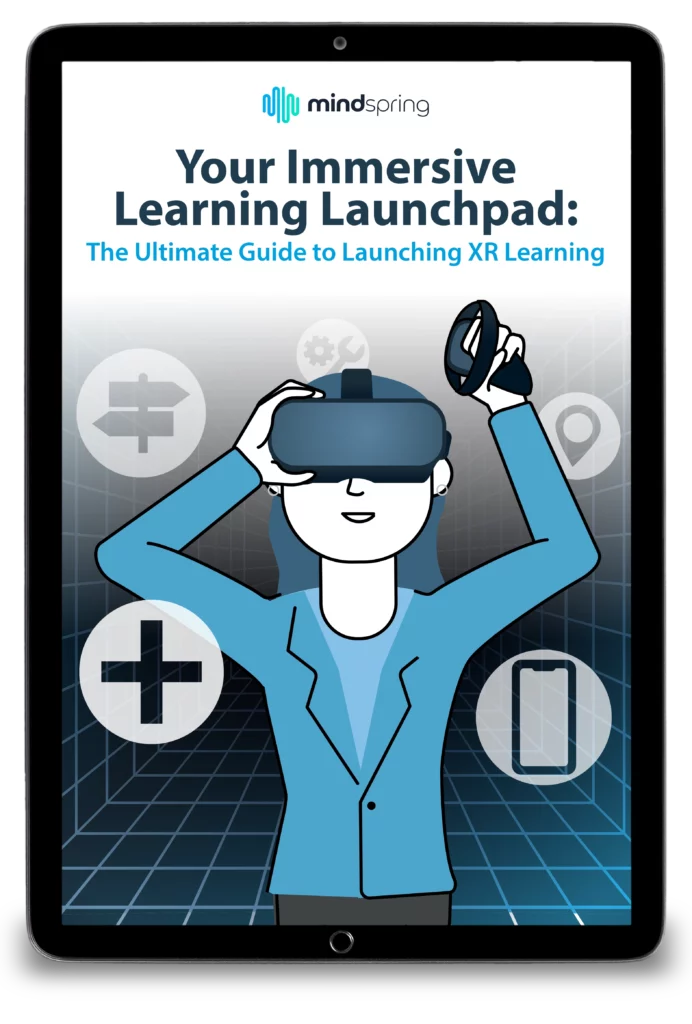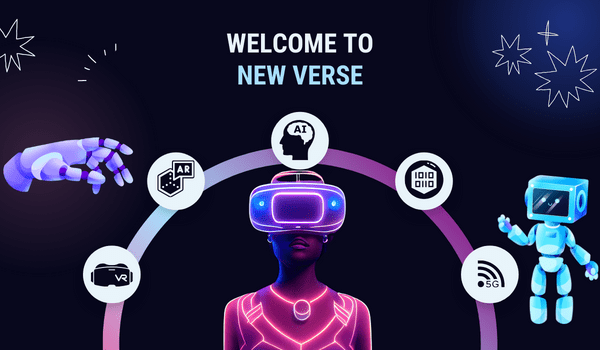Augmented Reality (AR) overlays digital elements onto the real world, while Virtual Reality (VR) immerses users in a completely digital environment. Mixed Reality (MR) merges real and virtual worlds to produce new environments where physical and digital objects coexist and interact in real time.
Exploring the realms of Augmented Reality Vs Virtual Reality Vs Mixed Reality opens the door to understanding the technologies that are reshaping our perception of reality. AR enhances our physical world by adding layers of digital information, often accessible through smartphones or AR glasses.
VR, on the other hand, transports users into entirely computer-generated spaces, typically requiring a headset. MR builds on AR’s concept but allows for interactions between real-world and digital elements, often requiring more advanced devices like the Microsoft HoloLens. These technologies are continuing to evolve, each carving out unique applications in gaming, education, industry, and beyond, promising to revolutionize how we interact with technology and each other.
Introduction To Immersive Technologies
Welcome to the exciting world of immersive technologies, where the boundaries of our physical and digital existence blur. These technologies transport us to worlds crafted by bits and bytes, allowing for experiences beyond our wildest dreams. In this blog post, we dive into the realms of Augmented Reality, Virtual Reality, and Mixed Reality to understand their unique features and applications.
Defining Augmented Reality (ar)
Augmented Reality enhances the world around us. Through a digital lens, AR superimposes computer-generated images onto our real-world view. Unlike VR, AR allows us to see and interact with digital overlays without disconnecting from our surroundings.
- AR adds graphics, sounds, and touch feedback to the real world.
- Uses: Gaming, navigation, and education enrich user experience.
- Devices: Smartphones, tablets, and AR glasses.
Understanding Virtual Reality (vr)
Virtual Reality transports users into a completely different environment. VR headsets display a 360-degree imaginary world, immersing us entirely in a digital experience where we can interact as if we were actually in that space.
| Key Features | Uses | Devices |
|---|---|---|
| Immersive simulation | Entertainment and training | VR headsets and controllers |
Exploring Mixed Reality (mr)
Mixed Reality combines elements of Augmented Reality Vs Virtual Reality Vs Mixed Reality allows real and virtual elements to coexist and interact in real-time. It creates scenarios where physical and digital objects are intertwined, offering a complex blend of our real and imagined worlds.
- MR anchors digital objects to the real world.
- It allows for the manipulation of both physical and virtual environments.
- Usage spans from design to entertainment.
- MR is experienced through MR headsets or smart glasses.

Credit: gomindspring.com
Historical Evolution Of Augmented Reality Vs Virtual Reality Vs Mixed Reality
The paths of Augmented Reality Vs Virtual Reality Vs Mixed Reality have twisted and turned through a fascinating evolution. From their conception to the cutting-edge technologies that enhance our world today, each has a unique history full of innovation and milestone achievements.
Milestones In Ar Development
The journey of AR started with simple concepts but quickly grew more complex.
- 1968: Ivan Sutherland creates the first head-mounted display system.
- 1990: Tom Caudell coins the term “Augmented Reality”.
- 1992: Louis Rosenberg develops Virtual Fixtures, an AR system for the U.S. Air Force.
- 2009: ARToolkit goes mobile, broadening AR’s reach.
- 2013: Google Glass launches to bring AR to everyday life.
- 2016: Pokemon Go becomes a global AR phenomenon.
Vr Through The Decades
VR has taken us to entirely new worlds since the middle of the 20th century.
- 1950s: Morton Heilig imagines Sensorama, a cinematic experience.
- 1960s: Heilig invents the Telesphere Mask, an early VR headset.
- 1980s: Jaron Lanier popularizes the term “Virtual Reality”.
- 1990s: VR arcade games and home systems emerge.
- 2010s: Oculus Rift sparks a new era of VR technology.
The Inception Of Mr Technology
MR combines elements from both AR and VR to create a new digital experience.
| Year | Milestone |
|---|---|
| 1994 | Paul Milgram defines the concept of a “Mixed Reality” continuum. |
| 2009 | Canon introduces a mixed reality system for industrial design. |
| 2016 | Microsoft releases the HoloLens, blending the real with the digital. |
| 2019 | Magic Leap One aims to bring MR to a broader audience. |
Technical Foundations Of Immersive Experiences
Immerse yourself in a world where reality intertwines with the digital realm. Augmented Reality Vs Virtual Reality Vs Mixed Reality stand on the shoulders of advanced technology to create enchanting experiences.
Core Technologies Behind Ar
Augmented Reality breathes digital life into our physical world.
- Cameras and Sensors: They capture real-world data.
- Processing: AR devices need robust processors.
- Projection: Information gets cast onto physical spaces.
- Reflection: Mirrors help users see virtual images.
The Machinery Of Vr
Virtual Reality catapults users into entirely new dimensions.
- Headsets: These are essential for a VR journey.
- Controllers: They let users interact with the virtual world.
- Tracking Systems: They trace every move you make.
- Audio Output: Sound deepens the immersive experience.
Constituents Of Mr Systems
Mixed Reality is AR and VR’s extraordinary offspring.
| Component | Function |
|---|---|
| Environmental Understanding: | Machines interpret surroundings. |
| Visual Displays: | MR glasses or headsets provide visuals. |
| Gesture Recognition: | Users manipulate the virtual elements. |
| Graphical Processing: | Computers generate complex images. |
Comparative Analysis Of Augmented Reality Vs Virtual Reality Vs Mixed Reality
Welcome to the fascinating world of extended reality, where Augmented Reality (AR), Virtual Reality (VR), and Mixed Reality (MR) are transforming our interaction with technology. This comparative analysis dives into each realm, exploring their core aspects to unravel how they reshape our digital experiences. Join us as we dissect their similarities and differences, the contrasting user experiences, and the varied hardware requirements and accessibility of Augmented Reality Vs Virtual Reality Vs Mixed Reality
Similarities And Differences
Augmented Reality Vs Virtual Reality Vs Mixed Reality often get confused due to their overlapping qualities. Yet, distinct features set them apart. Let’s unveil these in a digestible format:
- AR overlays digital content onto the real world.
- VR immerses users entirely in a virtual environment.
- MR blends both, merging real and virtual worlds.
User Experience Contrast
User experience varies significantly across Augmented Reality Vs Virtual Reality Vs Mixed Reality platforms:
| Technology | User Experience |
|---|---|
| AR | Enhances real-world with digital details. |
| VR | Creates a completely immersive experience. |
| MR | Allows real-time interaction with merged worlds. |
Hardware Requirements And Accessibility
Different technologies demand unique hardware:
- AR can work on smartphones, tablets, or AR glasses.
- VR requires headsets, often with external sensors.
- MR uses advanced headsets for a more complex setup.
Accessibility varies too. AR is widely accessible due to mobile devices. VR and MR gear are less common and pricier.
Current Applications And Use Cases
The realms of Augmented Reality Vs Virtual Reality Vs Mixed Reality are no longer the stuff of science fiction. Each offers a unique blend of digital interaction and has found its way into diverse applications. Let’s delve into the current uses that are shaping our reality.
Ar In Education And Training
AR technology transforms learning experiences. Students can visualize complex concepts with ease. Here are some key applications:
- Interactive textbooks come to life with 3D models
- Medical students practice surgeries with AR overlays
- Field trips turn into interactive adventures through AR
Vr For Gaming And Entertainment
In the world of VR, users are immersed in a digital environment:
- Gamers experience virtual worlds
- Concerts and movies become interactive experiences
- Theme parks offer thrilling VR rides
Mr For Industrial And Healthcare Innovations
MR combines elements of AR and VR to create new opportunities:
- Engineers test prototypes within a real-world context
- Surgeons view MR holograms during procedures
- Factory workers get hands-on training with virtual tools
| Technology | Applications | Use Cases |
|---|---|---|
| AR | Education | 3D Models in Textbooks |
| VR | Entertainment | Interactive Gaming |
| MR | Healthcare | Surgical Procedures |

Credit: elearningindustry.com
Market Dynamics And Industry Growth
Understanding Market Dynamics and Industry Growth is crucial. It gives insight into how Augmented Reality Vs Virtual Reality Vs Mixed Reality are reshaping businesses. These technologies are not just digital novelties. They’re revolutionizing industries. Their market trends, impact, and growth predictions reveal a future rich with innovation.
Augmented Reality Vs Virtual Reality Vs Mixed Reality Market Trends
The Augmented Reality Vs Virtual Reality Vs Mixed Reality markets are evolving. Their expansion reflects the rising demand for immersive experiences.
- AR popularity is soaring with mobile and enterprise applications.
- VR gains traction in gaming, training, and education.
- MR combines both worlds, blurring the line between digital and physical.
These trends show that the future is interactive and immersive technology.
Impact On Various Industry Verticals
AR, VR, and MR find use beyond entertainment. They transform industries.
| Industry | Impact of AR/VR/MR |
|---|---|
| Healthcare | Immersive training and patient care |
| Retail | Enhanced shopping experiences |
| Education | Interactive learning environments |
| Manufacturing | Streamlined design and production |
Each sector benefits from these technologies differently.
Predictions For Growth And Adoption
Forecasts for AR, VR, and MR are positive and promising.
- AR could lead with its versatility in applications.
- VR is expected to grow in gaming and simulation-based learning.
- MR may see slower adoption but has the potential for groundbreaking use cases.
Experts predict these technologies will become integral to daily life.
Challenges And Limitations
Exploring Augmented Reality (AR), Virtual Reality (VR), and Mixed Reality (MR) is exciting. But, there are big hurdles. We need to dive into these challenges and limitations to understand better.
Technical Limitations And The Quest For Realism
Creating worlds in AR, VR, and MR is tough. Making them feel real is tougher. Here’s why:
- High costs of advanced technology
- Limited processing power for complex simulations
- Issues with latency, leading to motion sickness
- Constraints in tracking accuracy and field of view
Ethical Concerns And Privacy Issues
The blend of real and digital raises questions:
- Who has access to your data?
- How real should the virtual world get?
- Can AR ads become too invasive?
User consent and data protection are key.
Barriers To Adoption And Mainstream Integration
Getting everyone on the AR/VR train isn’t easy. Here are the barriers:
| Barrier | Details |
|---|---|
| Cost | The high price of devices |
| Content | Lack of compelling applications |
| Stigma | “Gimmicky” technology reputation |
| Usability | Need for easier interfaces |
These roadblocks make wide use tricky.
The Social And Psychological Impact
Exploring Augmented Reality (AR), Virtual Reality (VR), and Mixed Reality (MR) reveals a stunning spectrum of the digital experience. These technologies have a profound social and psychological impact. They change the way we interact, think, and view the world.
Effects On Human Interaction And Behavior
AR, VR, and MR are redefining human interaction. They deliver experiences that were previously impossible. As people dive into digital worlds, their real-world interactions evolve. Let’s break down these effects:
- Enhanced Learning: Immersive tech turns lessons into experiences. This sparks curiosity and joy.
- Social Skills: Virtual realms offer places to meet new people. But, they might affect face-to-face communication skills.
- Empathy: These realities can foster understanding by putting users in someone else’s shoes.
Merging digital with physical, AR and MR allows for shared experiences, blending our interactions with layers of digital information. In contrast, VR can isolate users in a separate world, potentially dimming their social activity in reality.
Mental Health Considerations In Prolonged Usage
With long-term use, there are mental health factors to consider. What are these impacts?
| Technology | Potential Positive Impact | Potential Negative Impact |
|---|---|---|
| AR | Can reduce anxiety by overlaying calming elements. | Over-reliance might impair coping mechanisms. |
| VR | Therapy sessions for phobias or PTSD. | Risk of escapism leading to neglect of real-world issues. |
| MR | Encourages active learning and engagement. | Possible detachment from tangible reality. |
Consistent exposure to alternate realities may alter perception and cognitive functions. Users must balance digital and physical realms.
Cultural Shifts Toward Immersive Technologies
Immersive tech is not just for entertainment.
It is shaping culture. How?
- Art and storytelling now leap beyond traditional forms.
- Education adopts these tools for interactive learning.
- Workspaces integrate AR for enhanced collaboration.
These shifts hint at a future where digital immersion is common. Yet, they prompt questions about keeping human elements in a tech-driven world.
The Future Of Ar, Vr, And Mr
The virtual worlds we once dreamed of have become real. Augmented Reality (AR), Virtual Reality (VR), and Mixed Reality (MR) are not just buzzwords – they are the new frontier in interactive technology. As we peer into the crystal ball of technological advancements, these immersive experiences promise a future where our physical and digital worlds blend seamlessly.
Emerging Trends And Future Innovations
What does the future hold for AR, VR, and MR? Tech wizards are cooking up new magic as we speak. Let’s peek at the trends.
- AR for training: Doctors may learn surgery without risking lives.
- VR theme parks: Ride a dragon or fly to space – for real.
- MR workspaces: Meet your team in a digital office from anywhere.
The Convergence Of Ar, Vr, And Mr
This trio is joining forces. Imagine playing games with friends – part in your room, part in theirs. This isn’t just fun, it’s revolutionary.
Potential Developments In Hardware And Software
Hardware gets sleek: Bulky headsets are slimming down. Future gear will be as easy to wear as sunglasses.
Software goes smart: Software will learn from you, making your virtual worlds more like your real ones every day.
| Hardware | Upgrades |
|---|---|
| AR Glasses | Lighter, More Powerful |
| VR Headsets | Wire-Free, High-Res Displays |
| MR Interfaces | Intuitive Controls, Haptic Feedback |
How To Choose Between Ar, Vr, And Mr
Exploring the realms of digital enhancement, augmented reality (AR), virtual reality (VR), and mixed reality (MR) offer unique experiences. Picking the right one can seem daunting. This section will help you decide which technology fits your specific needs.
Determining The Right Technology For Your Needs
Understanding each technology’s capabilities is crucial. Look at your goals. AR adds to the real world. VR creates a new one. MR merges both. Your endgame decides your pick.
Factors To Consider: Costs, Setup, And Scalability
Account for the total cost. Some options might be pricier upfront but offer long-term value. Contemplate setup complexity. Can you deploy it with ease? Lastly, assess scalability. Will the technology grow with your needs?
| Technology | Cost | Setup Complexity | Scalability |
|---|---|---|---|
| AR | Varies widely | Usually simple | Highly scalable |
| VR | Medium to high | Can be complex | Moderate scalability |
| MR | Often high | May require experts | Depends on the use case |
Making The Decision: A Step-by-step Guide
- Define clear goals for the technology.
- Analyze your audience or user base.
- Estimate your budget and consider long-term costs.
- Evaluate the technical expertise required for setup and maintenance.
- Look at existing infrastructure and its compatibility.
- Consider the content availability and development needs.
- Choose the technology that aligns best with your outlined goals and capabilities.
By following these steps, you can make a well-informed decision on whether AR, VR, or MR suits your project best.

Credit: treeview.studio
Frequently Asked Questions Of Augmented Reality Vs Virtual Reality Vs Mixed Reality
What Is The Difference Between Augmented Reality And Virtual Reality And Mixed Reality?
Augmented Reality (AR) overlays digital content onto the real world. Virtual Reality (VR) immerses users in a fully digital environment. Mixed Reality (MR) blends real and virtual worlds, allowing interaction with both.
What Is Ar Vs Vr Vs Mr?
AR (Augmented Reality) blends digital content with the real world. VR (Virtual Reality) creates a fully immersive digital environment. MR (Mixed Reality) merges real and virtual worlds, allowing interaction with both physical and digital elements.
What Is The Difference Between Ar Vr And Xr?
AR (Augmented Reality) overlays digital content onto the real world. VR (Virtual Reality) immerses users completely in a digital environment. XR (Extended Reality) is the umbrella term encompassing both AR and VR technologies, and everything in between.
Is Mixed Reality A Combination Of VR and AR?
Yes, mixed reality blends elements of both virtual reality (VR) and augmented reality (AR) to create immersive experiences.
Conclusion
Exploring the realms of AR, VR, and MR uncovers a future where digital experiences redefine interaction. Each technology offers distinct benefits, shaping how we learn, work, and play. The potential is boundless, from immersive VR worlds to AR’s real-time overlays and MR’s seamless blend.
As innovation races on, the lines between these realities will blur, promising revolutionary changes across numerous industries and facets of daily life. Embrace the evolution; a new era of digital experience beckons.
For more technology blogs.
